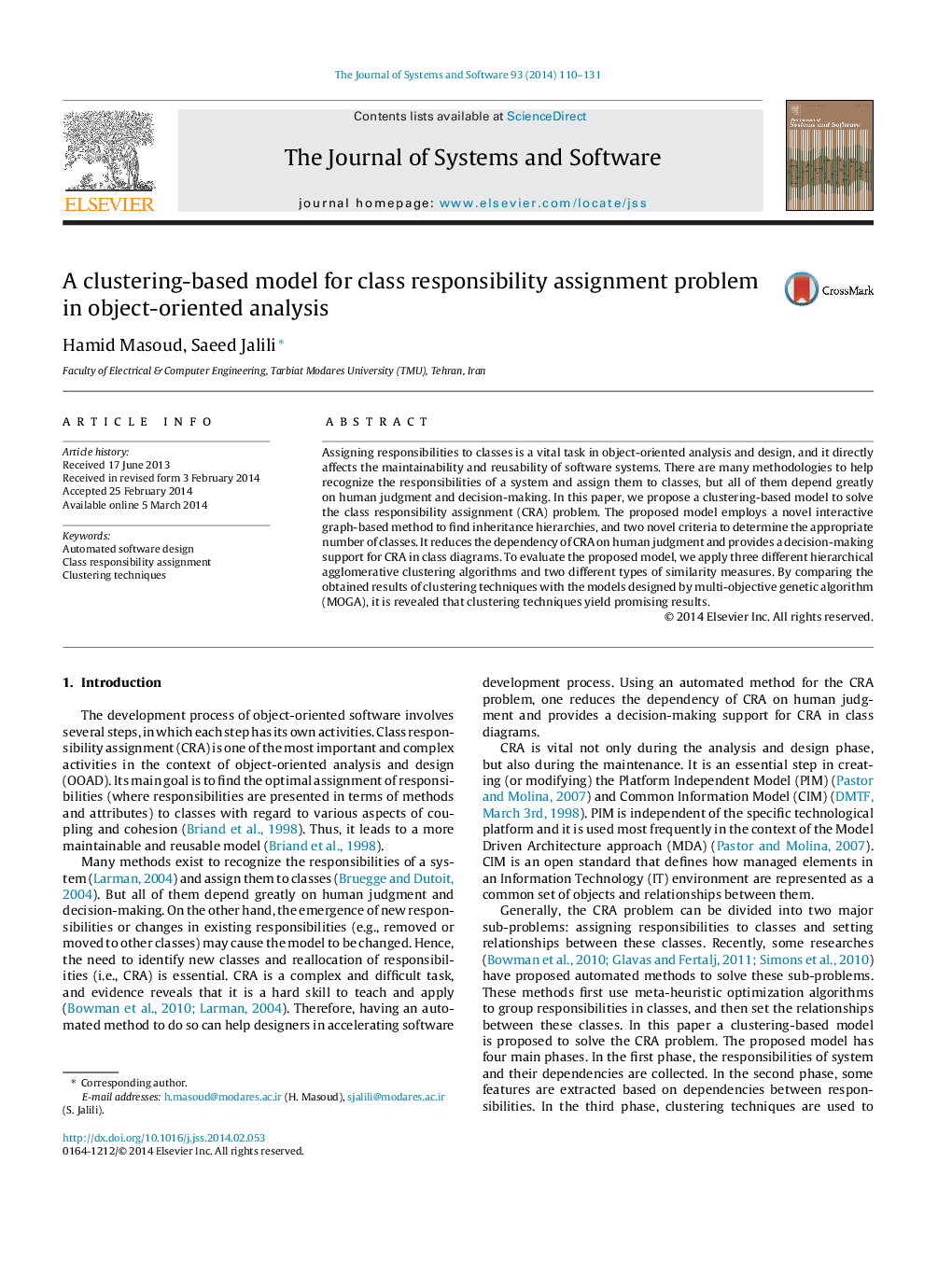| کد مقاله | کد نشریه | سال انتشار | مقاله انگلیسی | نسخه تمام متن |
|---|---|---|---|---|
| 461066 | 696540 | 2014 | 22 صفحه PDF | دانلود رایگان |
• We apply clustering techniques to solve class responsibility assignment (CRA) problem in object-oriented analysis.
• We introduce semantic dependency between software responsibilities and use them to generate class diagrams close the expert's one.
• We introduce two criteria to estimate the number of classes of a software system.
• We propose a novel interactive graph-based method to extract inheritance hierarchies.
Assigning responsibilities to classes is a vital task in object-oriented analysis and design, and it directly affects the maintainability and reusability of software systems. There are many methodologies to help recognize the responsibilities of a system and assign them to classes, but all of them depend greatly on human judgment and decision-making. In this paper, we propose a clustering-based model to solve the class responsibility assignment (CRA) problem. The proposed model employs a novel interactive graph-based method to find inheritance hierarchies, and two novel criteria to determine the appropriate number of classes. It reduces the dependency of CRA on human judgment and provides a decision-making support for CRA in class diagrams. To evaluate the proposed model, we apply three different hierarchical agglomerative clustering algorithms and two different types of similarity measures. By comparing the obtained results of clustering techniques with the models designed by multi-objective genetic algorithm (MOGA), it is revealed that clustering techniques yield promising results.
Journal: Journal of Systems and Software - Volume 93, July 2014, Pages 110–131
